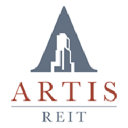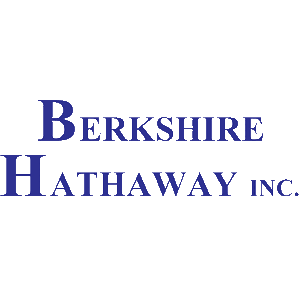
Artis Real Estate Investment Trust
TSX:AX.UN


| US |

|
Johnson & Johnson
NYSE:JNJ
|
Pharmaceuticals
|
| US |

|
Berkshire Hathaway Inc
NYSE:BRK.A
|
Financial Services
|
| US |

|
Bank of America Corp
NYSE:BAC
|
Banking
|
| US |

|
Mastercard Inc
NYSE:MA
|
Technology
|
| US |

|
UnitedHealth Group Inc
NYSE:UNH
|
Health Care
|
| US |

|
Exxon Mobil Corp
NYSE:XOM
|
Energy
|
| US |

|
Pfizer Inc
NYSE:PFE
|
Pharmaceuticals
|
| US |

|
Palantir Technologies Inc
NYSE:PLTR
|
Technology
|
| US |

|
Nike Inc
NYSE:NKE
|
Textiles, Apparel & Luxury Goods
|
| US |

|
Visa Inc
NYSE:V
|
Technology
|
| CN |

|
Alibaba Group Holding Ltd
NYSE:BABA
|
Retail
|
| US |

|
JPMorgan Chase & Co
NYSE:JPM
|
Banking
|
| US |

|
Coca-Cola Co
NYSE:KO
|
Beverages
|
| US |

|
Walmart Inc
NYSE:WMT
|
Retail
|
| US |

|
Verizon Communications Inc
NYSE:VZ
|
Telecommunication
|
| US |

|
Chevron Corp
NYSE:CVX
|
Energy
|
Utilize notes to systematically review your investment decisions. By reflecting on past outcomes, you can discern effective strategies and identify those that underperformed. This continuous feedback loop enables you to adapt and refine your approach, optimizing for future success.
Each note serves as a learning point, offering insights into your decision-making processes. Over time, you'll accumulate a personalized database of knowledge, enhancing your ability to make informed decisions quickly and effectively.
With a comprehensive record of your investment history at your fingertips, you can compare current opportunities against past experiences. This not only bolsters your confidence but also ensures that each decision is grounded in a well-documented rationale.
Do you really want to delete this note?
This action cannot be undone.

| 52 Week Range |
5.95
7.85
|
| Price Target |
|
We'll email you a reminder when the closing price reaches CAD.
Choose the stock you wish to monitor with a price alert.

|
Johnson & Johnson
NYSE:JNJ
|
US |

|
Berkshire Hathaway Inc
NYSE:BRK.A
|
US |

|
Bank of America Corp
NYSE:BAC
|
US |

|
Mastercard Inc
NYSE:MA
|
US |

|
UnitedHealth Group Inc
NYSE:UNH
|
US |

|
Exxon Mobil Corp
NYSE:XOM
|
US |

|
Pfizer Inc
NYSE:PFE
|
US |

|
Palantir Technologies Inc
NYSE:PLTR
|
US |

|
Nike Inc
NYSE:NKE
|
US |

|
Visa Inc
NYSE:V
|
US |

|
Alibaba Group Holding Ltd
NYSE:BABA
|
CN |

|
JPMorgan Chase & Co
NYSE:JPM
|
US |

|
Coca-Cola Co
NYSE:KO
|
US |

|
Walmart Inc
NYSE:WMT
|
US |

|
Verizon Communications Inc
NYSE:VZ
|
US |

|
Chevron Corp
NYSE:CVX
|
US |
This alert will be permanently deleted.





























Good afternoon, ladies and gentlemen. My name is Sylvie, and I will be your conference operator today. At this time, I would like to welcome everyone to Artis REIT's First Quarter 2020 Conference Call. [Operator Instructions] Today's discussion may include forward-looking statements, which include statements that are not statements of historical facts and statements regarding Artis REIT's future financial performance and its execution of initiatives to deliver unitholder value. Such statements are based on management's assumptions and beliefs. These forward-looking statements are subject to uncertainties and other factors that could cause actual results to differ materially from such statements. Please see Artis REIT's public filings for a discussion of these risk factors, which are included in the annual and quarterly filings, which can be found on Artis REIT's website and on SEDAR.And I would like to turn the meeting over to Mr. Armin Martens. Please go ahead, sir.
Okay. Thank you, moderator. And good day, everyone. Welcome to our Q1 2020 conference call. So again, my name is Armin Martens. I'm the CEO of Artis REIT. With me on this call are Jim Green, our CFO; Kim Riley, EVP of Investments; Phil Martens, EVP of U.S. Operations; and Jackie Koenig, SVP of Accounting. So again, thanks for joining us. We'll follow the usual format, and I'll now ask Jim Green to review some of our financial highlights and metrics. Then I'll wrap up with some market commentary and narrative, and then we'll open the lines for questions. So go ahead, please, now, Jim.
Thanks, Armin, and good afternoon, everyone. And welcome to the conference call. Pretty strange times we're living in right now. This COVID-19 situation seems affecting everything. So in early March, we were looking forward to discussing our first quarter results. And by early May, the discussion will likely mainly focus around collection of April and May rents and needed liquidity for the REIT. So given that situation, I'm going to keep my discussion of the quarter very short. Armin always tells me I talk too much anyway, so we'll keep it short. We can have more time for Q&A at the end. So you'll recall that in our third quarter earnings press release on November 1, 2018, we announced a series of new initiatives for the REIT, and we're now roughly 1.5 years into that plan. With the plan to be a 3-year plan, however, we are nearing completion of it. Recently, however, the last piece of the plan was to sell assets and pay down debt, and that has been hijacked a little bit until the economy starts to revert back to normal. Given the massive drop in REIT unit prices and the entire stock market, and the deep discount to NAV of Artis and some of our peers, we have been buying back some of our units, which has been very accretive to us. However, we have just announced that we are putting that program on hold to conserve our liquidity, until we see more clarity in the process to restart the economy. With the NCIB purchases recently completed, however, we have completed slightly in excess of what we had promised to do in the new initiatives planned. So it is complete. We may still be buying back more units in the future, depending on how the reopening of the economy progresses. So we look forward to continuation of that strategy in future quarters. Next steps, as I mentioned, is mainly selling assets and using it for debt reduction, which should demonstrate continued improvements in the balance sheet metrics. So given where we sit with the sales of assets, looking at the Q1 NOI, the REIT is now 50.4% weighted in Canada and 49.6% in the U.S., so just about a 50-50 split. And as the majority of future planned asset sales will likely be in Canada, we expect this ratio to continue to move, such that greater than 50% of our assets will be in the U.S. On an asset class basis, it's now 46.8% weighted in office, 18.7% in retail and 34.5% in industrial. Artis continues to be active in our new developments and redevelopment of our existing properties. We've invested approximately $125 million to date in properties that are under development. During the quarter, roughly a $23 million increase to that amount, so continued investment in our properties under development. As mentioned in the MD&A, we have several new development projects that remain underway, including the mixed-use residential tower at 300 Main in Winnipeg, new industrial space in Houston and a small retail development with additional density on one of our retail sites in Winnipeg. As detailed in the MD&A, we have several development projects in the planning stages where we have not actively started, where we've not gone through the development stages. And at the present time, we've pushed the anticipated construction to start a little bit just to continue to monitor our liquidity as we work through the COVID situation. Even with the buyback of units, we've been able to maintain our balance sheet with debt to GBV remaining relatively constant at 52.6% this quarter versus 52.3% at year-end. The impact of our new initiatives, the asset sales has definitely been evident on NOI this quarter with NOI down $5.9 million from Q4 of '19. Roughly $3.9 million of this decrease was due to lower income from properties sold in Q4 '19 or early Q1 of '20. A portion of the decrease is additional vacancy, and one of the largest vacancies in there was in the property in Ottawa that has just recently been sold at the end of the quarter, so that won't be a carryforward going forward. Deferred recoverable income is down roughly $700,000 from, call it, $3.1 million in Q4 to $2.4 million in Q1, a typical Q4 situation where you add a little bit of deferred recoverable cost into the operating cost in Q4. So that's an impact on NOI, but it is not an impact on AFFO because it's deducted from AFFO in the calculation. The remaining roughly $300,000 variance is a little bit less -- lease termination income than in the prior quarter and a little bit of reduced management company income from the sale of our properties. So FFO came in at $0.33 this quarter compared to $0.37 last quarter and $0.34 in the comparative quarter last year. AFFO was $0.24 this quarter compared to $0.25 in Q1 of '19. Our AFFO payout ratios remain very conservative at 42% of FFO and 58.3% of AFFO. So I'll just touch on a couple more operating highlights, and then we can turn it back to Armin. So I'll hit on investment properties. Investment properties are valued at fair value, and this quarter was really challenging to determine what constitutes fair value. There's no hard evidence that we can point to that cap rates, discount rates or market rents have moved substantially. IFRS, however, does require that you consider intangible evidence and thoughts. And in our opinion, the overall value of the assets, especially the retail assets, would be lower. If you had to sell them at March 31, then it would have been at the prior quarter. So to get that adjustment into our values, we adjusted it by factoring in larger vacancy reserves, so not no one vacancy, but larger vacancy reserves into our valuation models and, in some cases, longer lead times to re-lease any space that turns over. So the net impact on fair values was $141 million. We hope that's a little bit too conservative, but we will get more clarity on values as time goes forward. Touch briefly on same property because that's always one that is looked at very closely. So on a same property basis, we were up a positive -- it's positive 0.7% in functional currency and a positive 1.5% in Canadian dollars, once foreign exchange is factored in. We also presented a stabilized same property calculation, which eliminates properties planned for this position. And you may recall, in future quarters, we have backed out Calgary office properties. But given that this sector is now very small for us, we just added Calgary office back in to the remaining portfolio and, on that basis, have stabilized backing up the properties held for sale. Its growth of 1.3% in functional currency and 2.1% once FX is factored in. Industrial segment continues to be the strongest, with 6.3% growth in Canada and 3.4% growth in the U.S. And across the entire REIT, that represents now 7 consecutive quarters of same property growth. Touch briefly on net asset value per trust unit or NAV, as it's usually called. So Artis reports our investment properties at fair market value under IFRS, and that enables us to calculate a net asset value per trust unit using the equity on our balance sheet, less the equity held by preferred unitholders and divided by the number of common units outstanding at the end of the quarter. So on that math, the net asset value per trust unit was $15.52 at March 31 compared to $15.56 at the start of the year. Somewhat interesting to see only a $0.04 change, but there were a lot of moving parts. The fair value write-down of assets reduced NAV by $1.02. And the financial instruments, which consist mainly of our debt swaps on mortgages contributed a further $0.11 drop due to the falling interest rates. Offsetting this was a gain of approximately $0.90 of [ foreign ] exchange, $0.05 from our NCIB activity, with the rest of the change coming from the fact that our income exceeds our distributions. So subsequent events. Artis ended the quarter with $65 million of cash on hand and $138 million undrawn on our line of credit. And based on what we know today, we feel we have adequate liquidity to get through the COVID crisis, and we look forward to more normal times. I'll leave the detailed accounts receivable question open, and we can get into that in question and answer. And I'll pass it back to Armin now for a bit more discussion.
Okay. Thanks, Jim. So folks, we actually feel we're off to a very good start this year. We've made good progress on all key strategic fronts, and we're delivering strong performance metrics for our unitholders. Our weighted average rental increases, our FFO and our AFFO per unit have all solid numbers. And as Jim mentioned, we've delivered our seventh consecutive quarter of positive same property NOI growth. Our rent collections are good and already improving. We do not and we will not have an earnings problem this year, and we will not have an earnings problem, with the other problem is really just about the price multiple problems. Looking ahead, given our very conservative payout ratio and the progress we've made on our strategic initiatives, debt reduction will be and is the top priority for us. Having said all that, given the unprecedented times we're in, we have to look ahead with realism and work harder than average during the next 2 quarters to deliver normalized NOI during the course of this year. As Jim mentioned, the falling floating interest rates and the strength in U.S. dollar are natural boost to our earnings, and we actually think this is structural, and low rates are here for the long term. In addition, our unit buyback has, of course, been active and successful, highly accretive. That's been a great thing for us. Again, it's just 58% of our distribution payout ratio. It's very conservative and, indeed, the lowest payout ratio of the commercial REIT sector, by far. So again, we feel this is a solid foundation, a solid basis for us going forward. Our property disposition program has, of course, progressed very well to date. Thus far, the total value of property we have sold since November '18 is about $850 million, with another $50 million under conditional contract, as we speak. And again, we've sold all of these properties on time and on price, on time and on price to correspond with the IFRS NAV of about 50/50. Now looking ahead for this year, we do -- we no longer anticipate being successful in selling another $400 million of properties, but we do fully expect to sell at least another $100 million to $200 million by year-end and, again, at prices consistent with our IFRS NAV. It's important to note, of course, that as our financial metrics improve, so is our portfolio of properties. We're reducing our office and retail weighting and increasing our ownership with industrial properties. We're streamlining and high-grading our portfolio as well as reducing the number of secondary markets we're in. So on balance and notwithstanding these challenging times, our overall portfolio is performing well. Again, our industrial properties have a very good track record and continue to deliver solid organic growth. And our industrial pipeline -- development pipeline is on track to deliver excellent results as well. In terms of our retail properties, it's important to note that they represent just 18% to 19% of our total NOI, and we do have only one enclosed mall at this time, which will be about 5% of our retail portfolio. So the remaining 95% of our retail properties have all opened their service sector -- service-oriented strip malls. Now of that 19% of our NOI that is retail, we estimate that only about 25% of that would be nonessential retail tenants selling products that can also be purchased online. So about 75% of our retail tenants, we feel either essential or nonessential but can -- that require shopping in person, ranging from food, drugs, restaurant, bars, bakeries, a chiropractor, the dentist, hair, nail and so on, all these -- not all of this is essential, but they're done in person primarily, and that represents the vast majority of our retail tenants. So looking ahead, folks, we'll continue to work hard to keep our buildings full, whilst bringing the rents up to market and consistently streamlining and improving our real estate portfolio. To be clear, the integrity of our balance sheet, our earnings growth and implementing our strategic initiatives continue to be of utmost importance to us. So that's our report for this quarter, folks. We are pleased with the results and the progress we're making on all fronts. We are no doubt in the midst of a challenging year, but we remain highly confident in our outlook. I'll now ask the moderator to take over and field our questions.
[Operator Instructions] And your first question will be from Jonathan Kelcher at TD Securities.
We -- just to start on rent collections, how has May begun versus April in terms of rent collections?
May is definitely trending better than April, where we are today than in May than in April. And I'll let Jim give you -- be a little bit more granular. There will still be some tenants in the area that have accepted a 2 months' rent deferral program. And then there's still a couple of tenants that are lingering and not paying. But we are -- we feel good about May collections than we do about April. Jim, did you want to add anything to that?
I can be a little more specific, if you want. We are definitely ahead of where we were at this point in April. As the negotiations with tenants went through, I think they -- the ones that can pay have realized they have to pay and the ones that don't pay haven't moved a lot. So in -- if I break it out, in Canada, we have collected roughly 79% of our rents to date in May. And in the U.S., it's better at roughly 87%. Of course, there's no retail properties in the U.S. other than the tiny little bit on the ground floor of some of the office buildings. So pretty pleased with our rent collections to date. If you weighed that across the whole portfolio, we're sitting about 82% on -- as of yesterday on the 7th of May. So I think that's in pretty good shape.
Okay. That sounds good. And I guess some of the -- some of your properties are in states that are reopening. What -- have you guys made any changes in buildings or your tenants requesting anything different? How is that going? And how do you expect that to go as this goes on?
Yes, maybe we can ask -- Phil is on the line. We'd like to let Phil step in. On balance, real estate -- it's property management is considered essential services. We haven't closed any of our buildings anywhere and they're all open. You might have read our letter, I mean, we're -- our buildings have never been cleaner. Our tenants' hands have never been cleaner. We're -- I mean, all touch points are being cleaned multiple times during the daytime. Our hand disinfectants are everywhere. There's social distancing in the elevator, either 1 person or 2 people maximum in the elevator. In the U.S., all of the states we're in are open now. That's a good thing. Our employees can hardly wait to travel to Arizona for their monthly meetings, and they're getting ready to do that right here in Canada. We can't even -- -- I can't go to Regina. We don't have to go into self-quarantine. But Phil, did you want to add anything?
Yes, sure. We've been considered because of our ownership of buildings to be part of infrastructure and so essential services. So we have remained open. We -- every state does have their unique way of how they're going to face in the return to normal. Arizona is going to be a little sooner than most. Today, for example, was the day where salons opened up. May 11 will be when restaurants will open up, even though there'll be that 6-foot distancing. Colorado is similar that way. Texas as well. But Minnesota and Wisconsin are being a little more cautious, and there's going to be a couple more weeks before things open up, as they are now opening up here in the more Southern states.
Okay. And have your tenants made any request on changing layouts or anything like that? I think you're thinking more of the office tenants?
Yes. Sorry, we haven't yet. We are hoping. In some cases, we're finding as some build-outs are underway, which has, by the way, been very helpful for us. Having no tenants around, we've been able to have a much more efficient process of building out our tenant spaces. They are considering some shifts towards a little more space, but it's too soon to say that we have -- it's still anecdotal. But yes, we are getting a combination. But primarily, tenants that want to return to office spaces are considering having more room for them for their employees.
That's the other side of the narrative, Jonathan, that there is talk about more tension when you're able to work from home, but there's also talk about tenants now needing more square feet per employee, but we'll see.
Yes. Until daycares and schools open back up, which won't happen for the rest of the school year, you're going to see offices slowly come back. So we'll be really watching more. So school in the states opens in August. It finishes in May. So it's a bit earlier than in Canada. So we are going to get a good sense of where parents are at and how they're going to handle their kids going back to school. So we're optimistic that people will -- cannot wait to get back to the office.
Okay. And then just lastly, you've got some assets listed as held for sale. Which assets are those?
Do you want to comment, Jackie?
Yes. North 48 is our Canadian center in Calgary as well as our Victoria Square Shopping Mall.
Next question will be from Mike Markidis at Desjardins.
It was a little muffled when you were giving your reconciliation of the sequential variance in NOI. So could you just walk through those numbers, the $5.9 million decrease, please?
Sure. Just give me a second to get back to that page. It wasn't deliberate, Mike. I just leaned away from the microphone as I did that, Mike, yes. So NOI down roughly $5.9 million. $3.9 million of that is due to lower income from the properties sold. And if you take the distribution table on Page 5 or 6 of the MD&A, it listed of what the annualized income was. If you just run through that math and go, how much of that was in Q4, how much of that was in Q1, you will get to a variance of about $3.9 million on those assets. There was almost $1 million change in vacancy. You will have noted our vacancy was down a little bit this quarter from last quarter. One of the biggest hits to that was actually the property in Ottawa that was sold at the end of the quarter. So roughly $350,000 of the $1 million is that one property. That is now gone from the portfolio. Deferred recoverable income, down almost $700,000, so that is an impact to NOI, but not to AFFO because it's reduced from AFFO. And then the remaining roughly $300,000 is a little bit less lease termination income this quarter and a little bit of reduced income from our management company as we're managing less assets.
Got it. That's helpful. And then I guess, on the retail side, cognizant on the fact it's 19% of the NOI. Just curious, you said that 25% of your portfolio you deemed as being nonessential. But then you said 75% was either essential or requires in-person service. And I was wondering if you could give a little bit more granularity on the 75% just in terms of what is actually sort of a grocery or a drugstore versus what's actually a restaurant or another thing that may take a little bit longer to phase in as recovery goes.
Yes. And we're going to be doing that, Mike, in the next -- in our next MD&A. We'll get -- we'll be more granular and even split it up better. Of that 75%, about 1/3, you might see, it's what I would call an essential and then 2/3 of it nonessential, but still done in person, primarily in person. You can always order food takeout I suppose and let do other things that's -- but then you can't get your haircut online or your chiropractor, those visits because they're not essential, but there's -- you still have to do them in person. So that's the best ratio I can give you for now, 1/3, 2/3.
Okay. Just on the rent collection stats you've made, which sound very good to date, can you just clarify, that's still presented in a way that excludes the deferrals, correct?
Correct.
Okay. So where roughly is your growth rent bill for May? Or what is that figure in total?
So excluding the deferral, we were looking at collecting in the range of 30 -- a little more than $33 million.
Okay. And then with the deferrals, is that the $2.2 million, but that's in functional currency?
Correct.
Okay. So the CAD 33 million is all in CAD, the $2.2 million is functional currency.
No. The total charges, excluding the deferrals are $33 million, and it's estimated, and that is in functional currency. And it's estimated in functional currency in the months of April and May. We're looking at around $2.2 million of deferrals on top of that.
Yes. Got it. Okay. So $33 million is functional and the $2.2 million is in functional currency. Got it. Okay.
Correct.
Correct.
And the $2.2 million is not included in the $33 million, you 2 talked about it. Got it. Okay. Great. And just lastly, just as with the strategic review, at least on ice for now, arguably, a shorter-term debt profile was maybe a good thing with a potential transaction on the horizon. But you got a fairly significant chunk of maturities coming due over the next few years. I guess, a couple of things. Number one would be, how is the mortgage financing environment out there for you today? And then the second thing is, how are you thinking about your capital structure? And specifically, you got a lot of short-term sort of unsecured bank lines in your cap stack. I'm just wondering how you're thinking about that moving ahead.
Yes. So now that the special committee has done their work, we obviously will have more flexibility to deal with the debt profile. We were a little bit on hold with that for the last number of months because of their process, so things were kept more flexible. In hindsight, keeping it flexible has actually worked very well in our favor because we kept a number of things variable without swaps or long-term debt on them that are benefiting us greatly today given the falling interest rates. Now that said, now that interest rates have fallen, I think now is a good time to put some longer-term swaps and get some more term on that. So as the lender market opens up, right now, the banks are a little gun-shy. But as that opens up in the next few months, I think we will probably be extending some term on those. On the secured mortgage side, we've recently just renewed a bunch of the mortgages that were in that list of things maturing this year. One, we got an uplift on a couple of 3 big ones in the U.S., I guess, where we had an option to just extend, so we exercised the option. And it took away the right to upward finance. But the spread was running 200 basis points over LIBOR, so it was pretty tempting to just keep that spread intact because that's not available in the market today. Not anticipating any trouble refinancing any of those remaining debt maturities. A few of the small ones will probably just pay off and add to our unencumbered pool, and the rest, as far as I see today, will be no trouble to refinance.
Okay. And I'm sorry, I think it was roughly $350 million. But is that the still outstanding at March? And how much of that have you whittled down? Just trying to get a sense of what's left.
So that's the balance that is -- that was outstanding at March to date to May 7. I think we've built at about $100 million of that.
Next question will be from Matt Logan at RBC Capital Markets.
In terms of your assets that you have classified as held for sale, are those actively being marketed? And if so, could you give us any color on what you're seeing from potential purchasers?
Yes. So each of those assets are listed for sale with a broker. And I think, I mean, we're still kind of in a wait-and-see mode as things open up. And I think as travel restrictions lift, we'll see a little bit more activity. But we've been in contact with each of the brokers, and they're still actively working on it. But definitely, activity is a little bit slow, but we're hoping it will pick up now that restrictions are lifting and things are opening up.
And based on feedback, so far, that gives you confidence that you can sell $100 million to $200 million at reasonable values in 2020?
Yes, Matt. That was Kim Riley by the way that was just speaking on that point. And yes, we're optimistic. You will see -- assuming that we don't get another surge, as all the provinces open up and as travel restrictions ease up, we'll all get back to business. We've got some -- there's a lot of properties we still expect to be listing. We'll be -- we're taking in proposals from brokers. We'll get them all ready to launch. We might not launch until summer or even in the fall, but a lot of things will happen. And for provinces like British Columbia and Ontario, like Toronto and Vancouver, you don't need the travel restrictions to be lifted because the buyers are in Manitoba, Saskatchewan, Alberta. The buyers are mostly come from out of town. We need to fly them to the properties. So these kind of properties will take just longer to launch. But again, to Kim's point, we're point and want to hit the ground running as soon as the markets are ready. Right now, as we speak, buyers have put their pens down and we're waiting a little bit, and we get that. But they won't wait the whole year. They won't wait the whole year. We're confident we'll be able to get some deals done between now and the end of the year, not as much as we want, not the $400 million, as I mentioned. But $100 million to $200 million, we're very confident will get that done.
And maybe just changing gears here a little bit. In terms of your vacancies here this quarter, can you give us any color on prospects for maybe backfilling some of that space? Like are you still leasing and maybe what some of the activity levels are?
Well, we're virtually leasing for sure. Tenants have stopped their tours as well. Like I said, they're minimal. There have been minimal tours. That is if you a lease, we're noticing tenant retention is higher. We have -- on existing tenants, they are renewing. Sometimes, we only want a short commitment, but we are renewing. We're not getting off. They've looked at new space. But if we have a vacancy, it's hard to get a tenant to tour it and to sign a lease. Having said that, still, we're tech savvy. We've got virtual presentations available [ for any ] and all prospective tenants. But it's still hard to get a deal done with a -- not in the mood to coming to the property. So that's also slowed down. Deal velocity on the leasing side has also slowed down.
And one last question for me. Just in terms of your IFRS fair value marks, can you tell us how much was related to retail and Calgary office and what the value of those portfolios are today?
So yes, roughly of that $141 million, about $88 million of that was on the retail portfolio alone. There was about -- I think it was about $18 million that we took off the Calgary office properties, but they were already at a pretty low value. But Calgary, unfortunately, has just been decimated by the combination of COVID combined with the oil price crash again. So that city is in difficulty. We only have roughly, after that write-down, I believe, about $88 million of value left in Calgary office, so pretty small. And the rest was spread across office and industrial properties.
[Operator Instructions] And your next question will be from Mario Saric at Scotiabank.
Just on the IFRS valuation, the larger vacancy with the reserves that were factored in, can you give us a sense of what type of increase was reflected?
I believe they were moving it up from around an 8% vacancy factored on certain properties, so largely the retail ones. And then 3% to 4% across some of the other assets as a general vacancy allowance, in addition to the turnover vacancy that's budgeted.
Got it. Okay. And then how do you -- I guess, on the cap rate or discount rate side of the equation, how do you think about that? Is it simply just, as you mentioned, kind of too early to quantify that, and so it's put on hold? Or how should we think about the potential for cap rates to move up across the various asset classes and perhaps in reference to the types of spreads that you're seeing on the secured side today, how those have changed in the last 3 to 4 months?
Okay. That was a little bit of a list of questions. Let me see if I can remember them all, Mario. Yes, on the cap rate versus discount rates and will they change in the future, and that is hard to say. Going forward, I think we probably will see a little higher cap rates on the retail assets. I think given where interest rates are today that we probably will not see cap rate increases on retail and industrial. I'm not sure someone is going to contradict me on that. But on the discount rates, I'm not expecting them to move materially, yet. We have seen a huge drop in interest rates. And you're correct, the banks are today soaking up some of that. We have increased spreads that I think will tighten again as the market returns to normal and people get more comfort that, that is the going-forward interest rate.
Mario, I'll add a little bit. I mean, probably some of the national brokers on both sides of the borders. And in terms of industrial, for example, I'm being told that pre-COVID prices are here now. There is no deal to be had on industrial. Office, not yet, but office cap rates are expected to stay the same, not to be hurt. And retail is the wildcard here. We can make the case that the retail NOI will drop. So then what does that mean? As the cap rate drop in anticipation of the drop, what's -- on the backdrop to all of this is the fact that interest rates are lower than ever before, like ultra low rates are upon us. And you can make the case of European's [ lower ] interest rates are here. I don't know if we're getting 10-year mortgages at 1% or 2% necessarily, but rates are coming lower. So that puts the negative pressure on cap rates. So -- and I do see a year from now, a ton of liquidity out there. I mean, [ $12 million ] will be printed. And as you have a ton of liquidity out there, and I actually see cap rates being the same or lower for industrial and office. And being a little -- the same or a little higher for retail, but not necessarily a lot and only because there's just so much money out there that's putting negative pressure on interest rates and automatically, that puts negative pressure on cap rates. But retail is the wildcard. It's harder -- it will be harder to assess and to get your hand on. You have to take that one quarter at a time.
Understood. And maybe for Jim again. The debt in the U.S. that you extended given the attractiveness of the LIBOR spread, what would that spread have been if you didn't extend? Like what -- just trying to understand what the change there would have been.
I would ballpark, it would have been 100 basis points higher spread if we had to negotiate a new renewal. So I think we saved 100 basis points on that trade-off as we took 2- to 3-year debt as opposed to 5 to 7. But...
Okay. And then on the collection front, the May to date numbers, as mentioned a couple of times, look pretty good. Do you have what those numbers would have been in April at this point? Like how far ahead of April would you be at this stage?
I'm trying to remember where we were this point in April, but I would say we were...
5% lower.
At least 5% less collected in the first week of April than we were in the first week of May. They may have been a little bigger than that. As people were -- that was sort of the first month where tenants were saying, "Well, I'm not paying," and then you have to work with them to get them to pay, so...
Got it. Okay. So I'll take the extreme version of that talking about rent collection on May 8 versus May 9. In terms of the next question, much more of a high-level question going forward with the strategic view kind of set aside, like when you -- I mean, when you look at the organization and the strategy and what you've done in the last several years, does anything change strategically for you in terms of capital allocation, in terms of how you think about the business going forward because of this COVID-19 crisis? Or does it simply reinforce the previous kind of moved into industrial, for example, and what not? Like has anything changed?
Yes, fair point. No, I think we feel we're on the right track, and we -- and nothing much changed in principal, except that there's a loss -- there might have been a bit of a loss year -- loss half year with this. Recently, [indiscernible] and James have to speak, we need at least 6 months of time to move forward. But looking ahead, we will continue to sell down office and retail, and we'll continue to work hard to grow our industrial. Then parallel with that and, at least organically, we'll grow industrial. And as we get proceeds from our disposition plans from selling retail and office, we'll use that to pay down debt. We've got to get our debt down to 45% of the GBV into the multiples of 8. And when we get there, we can promise to a better price multiple. And then we can look at other ways to grow externally. But we do see ourselves shifting to a 60-40 in favor of the U.S. in total allocation, and we see ourselves being 50% industrial in the future as well, if not higher, and getting retail down to 10%, maybe 5%, maybe 0 of our total NOI. That's the direction we're going. Does that help?
Yes, that's great. Just a quick follow-up. Presumably, selling retail and, let's say, secondary office or nonstrategic office in order to buy industrial, aside from development, would be dilutive to kind of per unit results. Your payout ratio, as you highlighted, is extremely low relative to peers in absolute terms. So how do you think about the payout ratio -- target payout ratio going forward? And how does that intertwine with the desire to kind of rotate the asset classes as you've highlighted?
Well, as we sell down office and retail and then use them to pay down debt, as you know, it will be dilutive to -- and our field ratio will move up. We don't see our payout ratio, in any case, ever getting above 70%. But we want that -- we expect to have a pristine balance sheet and a really conservative payout ratio when we're finished selling, shall we say, another $800 million of properties. And we want to target $200 million this year and $600 million in next year. And then we'll be well poised. If we have to have a bounce, it will be a great position. If our unit price is still not performing well, we'll look at assigning back our units. Then if they're doing well, then look at, again, a greenfield development pipeline expanding. That's doing well for us. We're hitting almost a 7% [ unused ] yields than all of our greenfield development pipelines. But that's all down the road. The key dollars to keep improving our portfolio, streamlining it and high grading it and improving our balance sheet and then -- and all that makes us a better REIT, and then it improves the value of our units.
And Jim, did I hear you correctly earlier on in terms of liquidity, you're comfortable with your existing liquidity and there's no -- nothing planned in terms of substantially enhancing it anytime soon?
Correct. Nothing is planned to change in the liquidity at the moment. We think we have enough to run through. I guess the -- a major change in the pandemic situation could change that. But with what we see today, I think we're fine on the liquidity front. No real plans to change it. And right now, the banks are -- I think you'd -- I think we could access more credit if we needed it. But of course, the spreads aren't very attractive today. So today, we have no plans, and we're going to be going in [ when we have greater ].
Got it. Okay. And just my last question just relates to a comment, I think, that Phil made at the onset or Armin or both of you in terms of the office space and tenants potentially requiring more square footage by virtue of less square footage per employee, so lower density. So there's been a lot of discussion in terms of work from home and the negative potential absorption associated with that, bigger picture. But how do you think about the balance between the two? Do you think that there's enough willingness from a tenant perspective to reduce density, which would clearly cost the tenants more, over time, to absorb more people working from home? Like do you see it as a net positive driver for absorption in the office space? And how does that answer change like in a downtown scenario versus a suburban scenario in your opinion?
Yes. I personally see it as a net positive going forward. We'll see how comfortable everybody is by this fall. But today, as we speak, I don't see tenants being able to hop desk and share desk and all that anymore. And the idea of having 90 square feet per employee, that's out the window. You have to have more. So today, if a tenant is looking for at a least to have to take more space, you weigh that against working from home and the lack of productivity or the perceived lack of productivity when you're working from home, I think it balances out or as I said, it's net positive for us. Right now, the main reason people are working from home is because there are no daycares or schools for their kids. That's the main reason. But by the fall, we should also be back to normal with expected daycares, kindergartens, schools and things like that. And then we'll get a better feel for it. But right now, I think it's neutral or a net positive for us.
[Operator Instructions] And your next question will be a follow-up from Mike Markidis.
But I know it's small, but could you maybe give us the contribution of the Calgary office NOI to your 1Q NOI, please?
The exact number is about 2%, right?
Correct.
Yes. It's about 2%.
We're at exactly 2%.
2%. Okay. Great. And I think you gave us the value of the Calgary office $88 million. I don't think you disclosed the value of retail in your MD&A. If you do, forgive me. But what's the value of retail?
In total?
Yes.
The bulky one [indiscernible] is it -- Jackie is looking right now. You're looking for the gross number, right?
Yes.
Don't have that segment. It's going to be $900 million.
Were you saying $900 million?
That's about what's in my head, too, Mike. But I don't have the exact number at the tips of my fingers.
Okay. Actually, maybe if you could just follow offline, I'd be interested in knowing the gross value of retail and then also the amount of debt secured by Calgary office and retail, please.
Sure. Happy to do that.
And by the way, in our Q1 investor presentation will be posted to you by the end of today or Monday, at the latest. And then that's what we put information like that in terms of, like, the value -- the dollar value as well as the percentage of NOI for retail and all of our industrial classes.
Sorry, if it's possible to get before the weekend, that would be great.
Yes. Sure.
And at this time, Mr. Martens, we have no other questions. I would like to turn the call back over to you, sir.
Thank you very much, moderator. Thank you, everyone, for participating. I'm looking forward to getting back to work and, okay, traveling to Toronto and other cities and seeing everybody in person sometime between now and the end of summer. So stay safe and be well, everyone. Thank you, again.
Thank you, sir. Ladies and gentlemen, this does indeed conclude your conference call for today. Once again, thank you for attending. And at this time, we do ask that you please disconnect your lines. Have a good weekend.